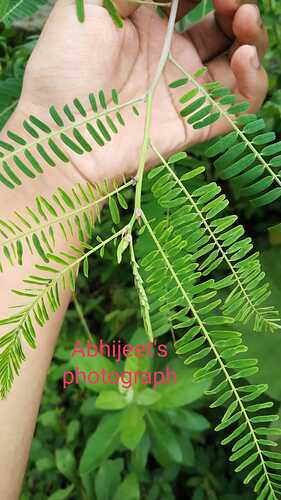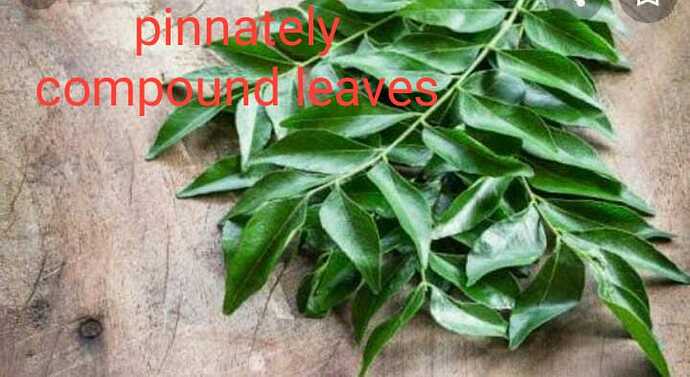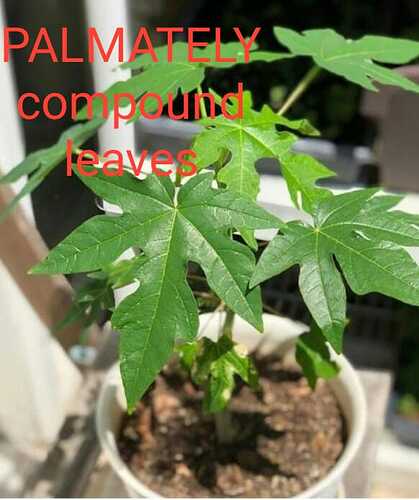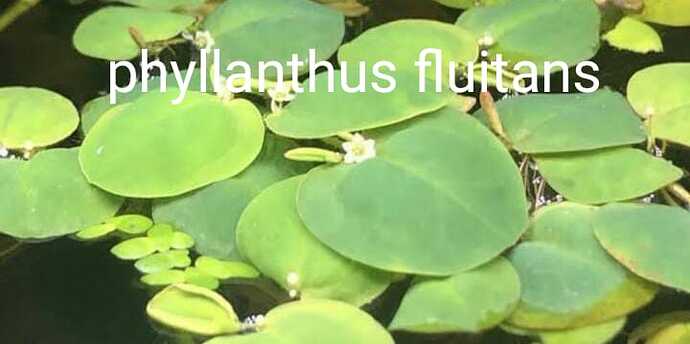FINDING WHEATHER THE PHOTOGRAPH SHARED BY ABHIJEET IS A PHYLLANTHUS PLANT
In today’s discussion, we talked about photography and how it helps us identify any organism? Abhijeet from Mumbai had sent a photograph of a plant which closes its leaf during night time and opens during the daytime. Is it Phyllanthus plant how do we identify it? surely by looking at characteristic features of this Phyllanthus plant is which has a simple leaf whereas in the photograph that was shared by Abhijeet shows compound leaf particular Palmately compound leaf.
DIFFERENCE BETWEEN PINNATE AND PALMATELY COMPOUND LEAF
what is palmately or pinnately compound leaf? for palmately compound leaf the leaflets form and radiate from a single point of attachment called the distal end another way to describe the palmate form is that the whole leaf structure is Palm where the leaves are projecting the leaf where are pinnate forms the leaves are not attached to the single point, for example, curry leaves the leaves are certainly not attached on a single point where is in Papaya leaf the leaves are attached to a single point So curry leaves is pinnately compound leaf whereas Papaya leaf is a palmately compound leaf.
EUPHORBIACEAE AND PHYLLANTHACEAE
Firstly Phyllanthus plant came under the family Euphorbiaceae but now it has a separate family called Phyllanthaceae that could be several reasons for it as to why the difference is been made. Why it has given a different family all together? one of the reason is that Euphorbiaceae plants are grown on land and one of the Phyllanthus species is aquatic
HOW DID NIDHI DISTINGUISHED THE PLANT FROM PHYLLANTHUS
Nidhi had come across the similar plant of which Abhijit shared a photograph. She wanted to identify whether this plant is Phyllanthus or not and because Phyllanthus belongs to the Euphorbiaceae family. The characteristics of Euphorbiaceae family was the leaf should be alternate, opposite, whorled, simple or rarely palmately compound, stipulate whereas this plant had pinnately compound leaf that’s how she identified that this plant does not belong to Euphorbiaceae family and hence it is not Phyllanthus. How do we identify this particular plant? now some key features could be seen through the flower which was not seen in this picture hence the identification on the family level is a bit delayed.
Talking about Cardamine plants, Nazish wants to find out if we can germinate and grow Cardamine seed in kanamycin medium
she wants to design an experiment.
question - does Cardamine grow in kanamycin? what will be the rate of germination of Cardamine seed in kanamycin?
the expectation is to get the same rate of germination as in the normal tap water medium that is 100% in 10 days all the Cardamine seeds will germinate but not grow. for this she is referring a paper on floral dip method in arabidopsis plant. as weighing machine is not available at home that is why we are making a stock solution of 1 mg per ml.
two cups are used for each set
10 seeds in each cup
each setup has one replicate
there are a total of 4 setups
30ml of setup solution +10 seed (submerged) in each cup [x2 per set up] {4 set up x 2= 8 test cups}
control- 30 ml of water + 10seed per cup [x2]
the stock solution
1000mg kanamycin powder in 1000ml of water
first set up solution - 2.5 per cent kanamycin
2.5ml of stock solution +97.5 ml of water=100ml
the second set up solution- 5 per cent kanamycin
5ml of stock solution + 95ml of water=100ml
third set up solution- 7.5 per cent kanamycin
7.5ml of stock solution +92.5ml of water=100ml
fourth set up solution -10 per cent kanamycin
10ml of stock solution +90ml of water=100ml
the measurement can be done using medicine bottle cap as the markings for 2.5ml and 5ml is available on it.
DISCUSSION SUMMARY BY SAIDA (CUBE HOME LAB BANDRA MUMBAI).




